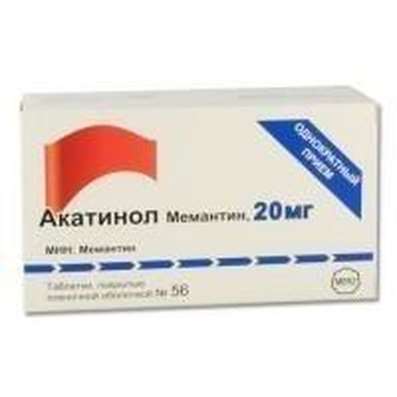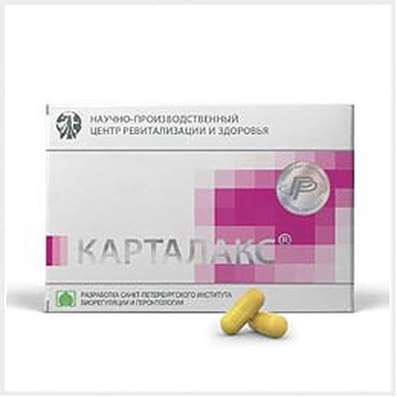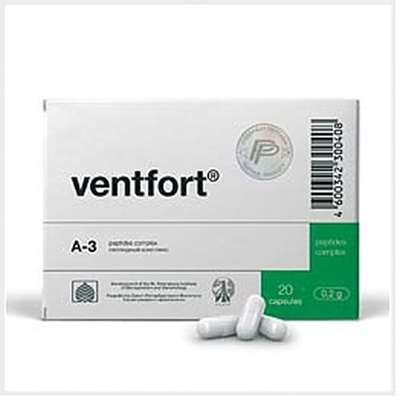Action mechanism of G - squirrels - the connected receptors
26 Dec 2016
The mechanism of signal transmission is identical at all G squirrels - the connected receptors (And). After accession of receptor conformation changes. Subjedinitsa gives GDF and attaches GTF, then separates from two other subjedinitsa, comes into contact with effector protein and changes his functional state. And β, and at-subjedinitsy are capable to contact effector proteins. a-Subjedinitsa provides slow hydrolysis of the connected GTF to GDF. Ga-GDF has no affinity to effector proteins and again reunites with β, at-subjedinitsami (And).
G-proteins can diffundirovat (lateralno) in a membrane; they aren't connected with a certain type of receptors. Nevertheless between types of receptors and types of G-proteins there is an interrelation (B). a-Subjedinitsy G-proteins differ on affinity and type of impact on effector proteins. Ga-GTF Gg-áåëêà stimulates to an adenilattsik-manhole while Ga-GTF Gj-áåëêà inhibits it. To G - protein - to the connected receptors muskarin holinoretseptor, receptors belong to noradrenaline, adrenaline, a dopamine, a histamine, morphine, prostaglandins, leykotriyena and other substances and hormones.
Effector proteins for G-protein are an adenilattsiklaza (ATP - an intracellular carrier of tsAMF), a phospholipase With (fosfatidilinozitol, intracellular carriers inozitoltrifosfat and diacylglycerin) and some proteins of ion channels (B).
The set of functions as tsAMF increases activity of a protein kinase And which fosforilirut regulatory proteins depends on concentration of tsAMF in a cell. Besides, rising of concentration of tsAMF leads to relaxation of a smooth musculation, rising of force of cordial reductions, intensifying of glycogenolysis and lipolysis. Phosphorylation of proteins of Sa-channels promotes their opening at depolarization of a membrane. It is necessary to notice that tsAMF is inactivated by phosphodiesterase. Therefore inhibitors of this enzyme maintain high cellular concentration of tsAMF and have effect, similar to an adrenaline.
Besides, receptor protein can fosforilirovatsya and thereof loses ability to activate G-protein. This mechanism is the cornerstone of depression of sensitivity of a cell as a result of long stimulation of a receptor under the influence of an agonist.
Activation of phospholipase With leads to splitting of phospholipids of membranes (fosfatidilinozitol-4.5-bifosfata) with formation of inozitoltrifosfat (1P3) and diacyl of Glycerinum (DAG). Inozitol stimulates an exit of Sa2 + from depot that leads to reduction of a smooth musculation, splitting of a glycogen or an exocytosis. Diatsilglitserin stimulates a protein kinase With which fosforilirut defined a serine - and the threoninecontaining enzymes.
Some G-proteins influence proteins of channels and promote opening of channels. Thus are activated by K+ - channels (action of Acetylcholinum at the synoptic level; influence of opioids on transfer of exaltation in nervous cells).
Systems of the secondary messengers connected to G-proteins.
In the table examples of similar receptor systems are given. It is obvious that a large number of primary messengers is regulated some by secondary. Thus, it is necessary to understand that specificity of action of initially communicating ligands is defined by localization of a receptor on certain cells in which secondary messengers cause an expression of the proteins specific to this cell.
Receptors connected to G-proteins
More than 1000 genes encoding the receptors connected to G-proteins are opened. These receptors are monomeric glycoproteins with rather similar amino-acid composition. 7 domains having hydrophobic amino acids as a part of a polypeptide circuit are characteristic of them. These domains are formed by loops in a diaphragm with one end which is coming out, and another - in cytoplasm.
Endogenous ligands communicate on an external section of a receptor. Small by the size, for example amines, join sections in different transmembrane areas whereas large, for example the polypeptides less capable to penetrate into hydrophobic regions communicate on ecstracletoc loop of a N-end section of a receptor. You can also like Cerebramin.
G-squirrels join an intracellular segment of a receptor in the 3rd loop between the 5th and 6th regions. Though the mechanism of the effect arising at connection with agonist isn't up to the end clear, it is supposed that this act stabilizes a receptor in the conformation allowing him to interact with the trimmer of G-proteins, activating them and the subsequent effector events.
The effect of agonist usually has only limited duration that is defined by several processes. The majority connected with G-proteins and receptors Cerina and a treonina in cytoplasmatic loop and in the S-trailer site which can be several kinases that limit interaction between a receptor and G-protein has the remains. This process is called desensitization of a receptor and allows a cage to answer very wide ranges of the concentration stimulating of agents. After long influence of agonist the number of receptors on a plasmatic membrane can be also regulated by the internalization process (which is carried out in certain cases by a catabolism), or down-regulation of a receptor. Though the signals causing her aren't clear, it is represented that they are excellent from controlling desensitization.
G-proteins
Carry out transduction of a signal from membrane receptors to effectors enzymes and ion channels. Each of these proteins consists of three separate subunit designated α, β at as decrease in molecular weight; the α- subunit of the trimmer and is the chief intermediary of influence of G-proteins on their effector. The main function β-and γ-subunit of the trimmer is support of interaction of a α- subunit with a plasmatic membrane and receptors, however they are capable also to direct regulation of effector.
Families of G-proteins mammals
The G-squirrels participating in transmembrane transfer of a signal are regulated by the general mechanisms. In the drawing their cycle of activation and an inactivation is presented. In a basal state three subunit of G-proteins are connected together and with guanozindifosfat (GDF), attached to α- subunit. When agonist connects to a receptor, GDF separates, and the place freed on α- subunit is taken guanozintrifosfat (GTF), a lot of present at cytoplasm.
Emergence of this communication stimulates G-proteins, as a result of α- subunits separate from a receptor and from β, γ- subunit and contacts effector. Several seconds later Gtfaza who is available in α- subunit hydrolyzes the connected GTF to GDF that leads to an inactivation of subunit. The α- subunit connected with GDF separates from effector and again is associated with β-, a γ-complex of G-proteins of G-proteins, becoming capable to a new cycle of activation by receptor.
The functional distinctions between members of family of G-proteins initially are defined by differences in the α- subunits. The nomenclature of G-proteins was initially built according to their function. So, the designations Gs and Gi are accepted for the G-proteins stimulating and inhibiting respectively. The designation Gi was entered earlier when for the first time the G-protein discovered in a retina was called transdutsin.
Imperfection of this nomenclature became obvious after separation and cloning of G-proteins with the obscure function. So there were designations Go, Gq, then G11, G12, etc. Some G-proteins expressed only in certain types of cells, for example Gt is found only in sticks and cones of a retina where activates a tsGMF-specific fosfodiesteraza. Other G-proteins, on the contrary, in the majority of fabrics and have multiple function, for example, Gi is present at the majority of cells, inhibiting, but is capable also to direct impact on some ion channels.
The influence of the majority of G-proteins on effectors is stimulating however some inhibit them. For example, G0 inhibits Sa2+-channels in a brain and heart; Gs stimulate, a Gi inhibits. The last two G-proteins are in turn regulated by different groups of receptors which are often provided in one cell. Result of simultaneous activation of the stimulating and inhibiting receptors is reduction and mitigation of response.
This double regulation in addition to interaction of other following behind proteins of components of signal system provides the integrated response of a cell to numerous incentives.
Effector enzymes regulated by G-proteins. From three components providing the carrying out a signal interfaced to G-proteins, it is the most difficult to study effector links at the molecular level. Only recently some of enzymes of this link were isolated and cloned.
Effects hormonal and receptors most often are implemented through adenilattsiklaza and phospholipase of Page. Other enzymes, such as A2 phospholipase producing arakhidon acid also, apparently, are regulated by G-proteins, however these responses are up to the end not clear.
Adenilattsiklaza and tsAMF as a secondary messenger
Cyclic AMF (tsAMF) is synthesized from ATP by adenililtsiklaz enzymes which are built in a plasmatic diaphragm.
It is represented that these enzymes are the big polypeptides containing two clusters from six transmembrane segments separating two similar catalytic domains. Is available, on extreme a Mercedes, eight forms of adenilattsiklaza. All of them are stimulated with Gsα, but differ on sensitivity to the inhibiting influence of Gα-stimulation in calmodulin (calcium/calmodulin) and on effect β, at-subunits G-proteins. These additional regulators give ability to integrate many signals influencing different systems of secondary in one cell.
Cyclic AMF shows the effect in a cage, generally activating tsAMF-dependent proteinkinaza (a proteinkinaz of A, PKA). These tetrameasured enzymes consist of two regulatory and two catalytic subjedinitsa. Enzymes are activated when two molecules tsAMF join each regulatory subunits, releasing catalytic subunits from tetrameasure. The released subunits catalyze transfer of phosphatic group of ATP on the specific serinov or treaninon remains of proteins targets. Among them there can be enzymes which participate in metabolic processes of cage, and the proteins regulating a gene transcription. The metabolic way activated by tsAMF making the cascade of enzymatic activation leading to disintegration of a glycogen in liver is well studied, for example. The activated proteinkinaza and fosforilirut fosforilazny kinase (phosphorylase kinase) which in turn fosforilirut glikogenfosforilaza is enzyme catalyzing disintegration of glycogen.
Action of tsAMF on a transcription of genes is mediated catalyzed protein and phosphorylation of the protein known under the name cAMP response clement-binding protein (CREB) which joins the specific short sequences of DNA known as cAMP response elements (CRE). CREB joins CRE, being fosforilirovan and that stimulates a transcription of the genes supporting CRE in regulatory zones.
Phospholipase with and phospholipid secondary messengers
Representatives of family of G-proteins integrate various receptors to group of the enzymes famous as phospholipases cf. These enzymes concern to big family of phospholipases for which substratum are inozitolfosfolipida. The alarm transduction in this way attracts the sequence of molecular events similar with observed in case of activation of an adeiilattsiklaza. Linkng of agonist with a receptor activates G-protein which in turn joins a phospholipase on an internal surface of a plasmatic membrane. The activated lipase quickly turns fosfatidilinozitolbifosfat (PIP2) in inozitoltrifosfat (IP3) and diatsilglitserol. Both of these molecules work as secondary messengers in two various ways: IP3 the small water-soluble molecule capable to diffundir quickly in cytoplasm and to join 1RZ-dependent calcic channels in a smooth endoplasmic retikulum, releasing calcium inventories in cytosol.
Increase in concentration of Sa2 + in cytoplasm initiates a wave of Sa2+ reactions in a cage, many of them are mediated by specific Sa2+ proteins from which the calmodulin is most widespread. Sa2+-kalmodulin regulates a number of enzymes, including Sa2+-zavisimuyu to ATFAZ of a plasmatic membrane which extorts calcium from a cage, and as it was told earlier, some types of adeiilattsiklaza. The majority of effects of calcium in a cage is result of activation of group proteinkinaz, known as Sa2+-calcium module depending proteinkinaza. These kinases fosforilirut seri-new and treonin remaining balance of various proteins. Thus, again physiological response to activation of phospholipid secondary messenger in each cage depends from ekspres in it the proteins which are target Sa2+.
Other molecular product of hydrolysis of PIP2 a phospholipase With is äèàöèëãëèöåðîë. This lipidic molecule remains in a plasmatic diaphragm where together with fosfatidilseriny the serin-treoninovykh êèïàç, known as a proteinkinaza of Page activates some members of other family. These soluble kinases peremetatsya in a diaphragm in response to increase in calcium in ïè ãî to a spinning top (IP3 caused by release) and then are activated by combined influence of Sa2 + a diatsilglitserola and a fosfatidilserina. Being activated, these kinases fosforilirut groups, specific to a cell, the substratnykh of proteins which include many ion channels, receptors and other kinases that as a result increases a gene transcription.
Other processes of signal transduction regulated by G-proteins. In addition to the described enzymes it was shown quite recently that G-proteins modulate also activity voltazh depending ion channels. Apparently from the table, many hormones and neurotransmitters regulate both secondary messengers, and the ion channels, activating one G-protein. In particular, Gt stimulates both adenilattsiklaza, and some types of Sa2+-channels.
Obviously, further clearing up of mechanisms of direct and reverse regulation of receptor systems of a signal transduction is one of the most important scientific tasks of the future.

 Cart
Cart





